#werwulf
Text

The French word for a werewolf is loup-garou. Etymologically, this compound is pleonastic: garou means 'werewolf' and loup means 'wolf'. It's also hybrid: loup stems from Latin lupus whereas garou was borrowed from West Germanic *werwulf. Click the image for more.
#historical linguistics#linguistics#language#etymology#english#latin#french#old french#proto-germanic#proto-indo-european#proto-italic#proto-west germanic#lingblr#werewolf#werewolves
988 notes
·
View notes
Text
we need to update werewolf terminology
'werewolf' comes from old english 'werwulf', meaning man-wolf.
following old english lexicon, a female werewolf would be a 'wifmanwolf', from 'wifmann-wulf' which means woman wolf. a gender neutral term would be 'mannwolf' which doesnt sound gender neutral, but in old english 'mann' (pronounced 'mahn') just means a human.
55 notes
·
View notes
Text
So three things regarding Hunter and the things inside him:

being a grimwalker, was made using the lungs of a stonesleeper, which is heavily non-avian dinosaur coded like I mean just look at it that thing's a goddamn hex-ual Tyrannosaurus

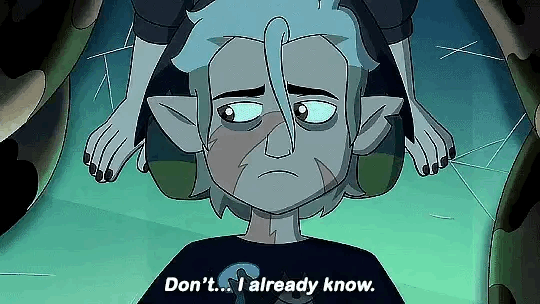
After Belos said "fuck this shit I'm out" and the subsequent Flapjackrifice, Hunter now has his late palisman inside of him as well.
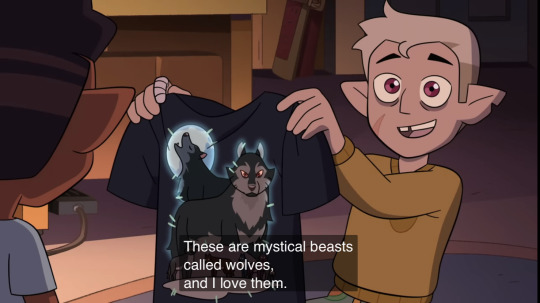
It's not something that's literally inside of him, but it's safe to say that Hunter has internalized the essence of those "mystical beasts called wolves"; because this is a series about demons, witches, and the supernatural and because of some Reddit posts made by @artmakerproductions noting the similarities between Hunter's possession the 1941 Wolfman movie, we can lump werewolves into those as well (besides, this resulted in everyone being /j or /srs about Hunter being a furry with a leaning towards wolves, and what is a wolf furry but a man-wolf—or as you would say in Old English, a werwulf)
What's this mean? Well, looking at Caleb's most recent descendants within the Clawthorne family...
Eda — owl beast
Lilith — raven beast
Hunter — stonesleeper (non-avian theropod dinosaur) + Flapjack (avian dinosaur) + were/wolf =
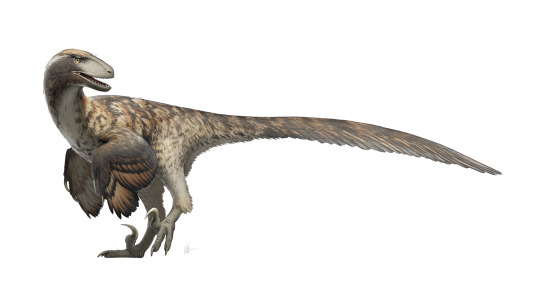
Raptor beast. (but this would be different from what Eda and Lilith have since it's not technically a legitimate curse)
Specifically this could draw from Jurassic World's take on Pyroraptor since not only is it red with a little crest kinda like a cardinal, but the grimwalker book we saw also called for the scales of a selkidomus, a seal-like marine demon, and we all know what Dominion's pyro was like...

#the boy can go all Jurassic Park Novel on his so-called uncle. as a treat.#the owl house#toh#hunter noceda#toh hunter#amber's post
95 notes
·
View notes
Photo

Hror, Werwulf Thegn, from Mierce Miniatures
gotta keep an eye out for sweet minis to paint from non-GW places
54 notes
·
View notes
Note
do you have any good werewolf blog recs :3
yeah i have a handful!! i have terrible terrible memory so im probably forgetting some, but !!
@4bloodypawz, @werewolvesrights, @neolithica-werwulf, @maverick-werewolf, n @snarlsnstares !
#i tried to put blogs that are pretty much Just about werewolves... or like werewolf-adjacent stuff...#hii. i feel awkward directly tagging sm people but. yeah. i like these blogs!#lmk if u wanna be untagged off this post btw ^_^;;#askbox of inquiry#werewolf
24 notes
·
View notes
Text




Tana Boys
The modern Norse form varulv (Danish, Norwegian and Swedish) was either borrowed from Middle Low German werwulf, or else derived from an unattested Old Norse *varulfr, posited as the regular descendant of Proto-Germanic * wira-wulfaz.
@andersxragnulf @danteragnulf @connorlang
#edit.#anders.#dante.#connor.#clownmas.#//me wondering how i do an edit for all three of you#//and then realizing
5 notes
·
View notes
Text

I posted 142 times in 2022
69 posts created (49%)
73 posts reblogged (51%)
Blogs I reblogged the most:
@maverick-werewolf
@wulfgard-fantasy
@everythingfox
@carsonsweebabyturtles
@bailey-girl-99
I tagged 134 of my posts in 2022
Only 6% of my posts had no tags
#werewolf - 31 posts
#werewolves - 30 posts
#in case you missed it - 23 posts
#wulfgard - 21 posts
#reblog - 20 posts
#updates - 19 posts
#folklore - 16 posts
#asks - 15 posts
#self reblog - 14 posts
#cute animals - 12 posts
Longest Tag: 140 characters
#make sure the story has some other kind of proof or was told by several different people in variants or was mentioned by one or more experts
This is a LONG-ASS year in review so I hid the rest under the cut, omg, lol. You peeps really loved my long werewolf facts and I am so happy you did, they were labors of love!
Here's to 2023! I've got a lot cooking (read all about it here)!
My Top Posts in 2022:
#5
Usually when referring to werewolves people tackle them in a pretty broad scope. Referring to Le Lobizon, the loup-garou, King lycaon, etc…but what is the mythology surrounding the werwulf or werewolf specifically? Like the German middle age definition of a werewolf?
That's a very complicated question - but it’s also not. If that makes any sense at all. Let me elaborate...
What we call “werewolves” has almost become retroactive. We can’t really say that “werewolf” is a uniquely German term, despite being Germanic in nature, because our first recorded use of a variant of “werewolf” wasn’t even recorded in Germany. “Werewolf” never appeared very much in medieval writings, despite originating during the medieval period (more on that in a minute). Yes, you can find people using the term “werewolf” (and its assorted variations), but sadly, it often becomes a matter of asking: is this a real source, or is this something someone is falsifying?

This is a woodcut from 1722 in Germany of a werewolf. It’s one of the few instances we do have that is directly referred to as a “werewolf,” so we can be sure their werewolf legends in the 1700s, at least, weren’t too far off the mark from the kind of thing we have today.
You can find lots of “werewolf legends” in Germany from the 1800s and around that general time period that supposedly throw around the term “werewolf” (again, and its variations), but having read many of these myself and researched their sources and origins, I can tell you that the overwhelming majority of these things are just... nonsense. They weren’t legends. They were basically short stories, fake local tales, and generally untrue “folklore,” for whatever reason people had to be producing it. (What’s one way you can spot these? Several of them mention silver) There is a glut of utterly fake “German werewolf folklore” out there from the 1800s especially.
At any rate, as for the Middle Ages in Germany and what they considered to be werewolves, we have to look at Germanic folklore and mythology for that. In the pre-Middle Ages, early Middle Ages, and even into the mid Middle Ages, much of the Germanic regions of Europe were dominated by the old Germanic concepts - namely berserkers (which, again, were not bear warriors) and related legends.
It wasn’t really until after the Middle Ages that the word “werewolf” became used often across multiple regions. Much of what we call “werewolves” today is a retroactive label or translation.
What may have been the first use of the word “werewolf” appeared in the early 1000s. To quote my book, The Werewolf: Past and Future...
Much like what happened with the Vikings, as the medieval world converted to Christianity, werewolves were cast in a steadily more negative light. The king of England from 1016-1035, King Cnut, issued the Ecclesiastical Ordinances XXVI, in which he specifically mentions the werewolf in relation to the Devil, saying, “[be watchful, that] the madly audacious were-wolf do not too widely devastate, nor bite too many of the spiritual flock.”[1] This passage marks one of the earliest instances in which the term “werewolf” is virtually equated to the Devil or demons in general in Christianity, which becomes common in later medieval writings – and it also marks the first recorded use of the word “werewolf.” Instead of the wolf being a brother and wolf transformations being desirable, or at least not worthy of condemnation, Christianity altered the view of werewolves, turning them into demonic creatures associated with evil and witchcraft, who romp across the countryside leaving death and destruction in their wake. As stated by Beresford, “[T]he use of the werewolf as a religious scapegoat by the Church throughout the Middle Ages is intrinsic to the development of the myth of the modern beast. What was once … a highly revered and worshipped beast, emerges in the medieval period as a savage creature, poisonous, destructive and wholly evil; a beast to be feared and not imitated.”[2]
[1]Beresford 80, quoting Ecclesiastical Ordinances XXVI by King Cnut of England
[2]Beresford 88. However, in this passage, he does not seem to wholly take into account just how many medieval werewolf legends existed, and how some of them were not necessarily demonic – these were, however, more often than not, unrelated to the Church (except for a few cases, which Beresford himself also cites in his book), so his point largely still stands.
Another direct use of the word “werewolf” appears in assorted medieval lays about werewolf knights, such as Marie de France’s Bisclavret, Sir Thomas Malory’s Le Morte d'Arthur, written in 1470, etc. So, in many ways, you could even say the proper medieval concept of a werewolf was a noble knight, as they were actually directly called “werewolves!”
It’s all but impossible, in folklore and myth, to nail down certain legends about certain creatures. This is because folklore and myth are very indirect, as compared to the kind of things people create today in pop culture. A true “werewolf legend” spans tons of legends - and simultaneously almost none at all. Scholars have often dictated what is and isn’t a werewolf legend, and their decisions about it frequently don’t even make any sense (especially if you ask me). This applies to so many creatures, including both werewolves and vampires, and that’s why when someone asks me “what were dragons like in folklore?” I can’t give a direct answer. I have to almost write a book on it, because all monsters and creatures in folklore have very complicated backgrounds, many different names, often didn’t go by the names we put on them today at all, etc.
I hope this helped! Sorry I couldn’t give a more direct answer. Some other useful werewolf facts for this topic:
What Is a Werewolf
What Is and Isn’t A Werewolf Legend
Peter Stubbe and how he wasn’t a werewolf at all and was never, ever referred to as one
79 notes - Posted January 24, 2022
#4
Werewolf Fact #66 - The Legend of King Lycaon of Arcadia
Continuing the series of close looks into specific werewolf legends, let’s examine what’s generally considered one of the most important werewolf legends in history: the story of King Lykaon (Λυκᾱ́ων - or Lycaon, a more Anglicized spelling) of ancient Greece.
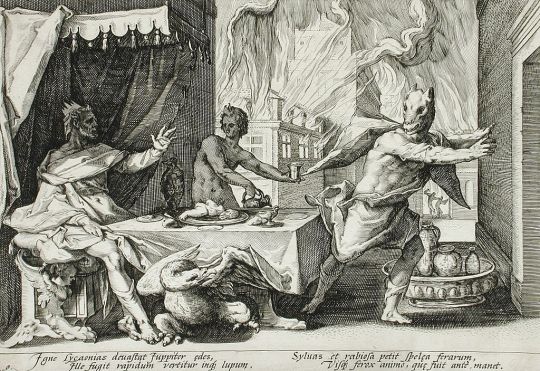
Although I did a smaller post on Lycaon quite a while ago, this one will be more in-depth. Despite there being a lot of other legends and werewolf legends surrounding Lycaon and different regions of Greece - some of which are discussed in this post of mine - I’m not going to go into those again this time. This post is exclusively about the legend of Lycaon himself (I will be referring to him as Lykaon from here on out).
A quick summary before we go into more detail: Lykaon was a king of Arcadia in ancient Greece. As the legend goes, Lykaon decided to test the divine omniscience of Zeus by killing one of his own sons, Nyctimus, and cooking him into food to serve to Zeus. Naturally, Zeus realized what Lykaon had done, so he turned Lykaon into a wolf as punishment, killing his other children and bringing Nyctimus back to life.
However, Lykaon wasn’t remembered too negatively despite his actions or his fate. He did plenty of other good deeds, like founding cities and creating a cult dedicated to Zeus, as well as hosting a series of games called the Lykaean Games, among other things. He also had a lot of kids. And, please note, there were a lot of “Lykaon”s in Greek myth. This is merely one of them.
But what I’m going to focus on is the legend of how Zeus turned Lykaon into a wolf and the details thereof - and what impact it’s had on werewolf studies and werewolves in culture forever afterward.
Perhaps the earliest version of Lykaon’s myth was told by Hesiod. However, there are many different versions by an assortment of authors. Several of them recount the tale differently, with various aspects changed, and some even claim Lykaon was never turned into a wolf at all and was instead killed instantly by Zeus’s lightning, among other alterations.
Perhaps the most well-known version of the tale is the one I’ll be quoting from, however: not a Greek author but a Roman one, Ovid, in his Metamorphoses. Ovid, too, alters the story from Hesiod’s “original,” though he retains the most important aspect from the perspective of werewolf studies: Lykaon’s transformation into a wolf and “transformation scene” of sorts.
The edition of Metamorphoses from which I will be quoting is as follows:
Ovid. Metamorphoses. Trans. A. D. Melville. New York, NY: Oxford UP, 2008. Print.
(Please note for the sake of this post I’m not using perfect MLA citation for each quote. You can find those in my published academic works, but not these posts. But the citations here will be readable, just not totally up to nitpicky academic standards.)
It all began for Lykaon when Zeus - or, in the case of Ovid’s version, in Metamorphoses, Jupiter, generally the Roman equivalent of Zeus - arrives in Acradia. Unlike everyone else, Lykaon had his doubts about the god...
he [Lykaon] / Scoffed at their worship. “A clear test”, he said, / “Shall prove if this be god or mortal man / And certify the truth”, and he planned for me, / At dead of night, when I was sunk in sleep, / Death unforseen--so would he test the truth. (page 7)
Unlike Hesiod’s version, in Metamorphoses, Lykaon kills a “hostage sent / Far from Epirus, slitting his throat, and boiled / Part of the flesh, scarce dead, and roasted part” (7) instead of doing that to one of his own sons. Either way, with that done, he had Jupiter join him for a meal, telling him to eat the flesh of this person he’d just cooked.
Unfortunately for Lykaon, Jupiter was in fact Jupiter the omniscient, and the moment he was offered the flesh...
At once my avenging flame / Whelmed in just ruin that guilty house and him. (7-8)
And now the most important part - Lykaon’s transformation scene! Yes, werewolves have been having transformation scenes since time immemorial. And Lykaon’s is one of the best. It’s very... vivid, moreso than one may expect:
He [Lykaon] fled in fear and reached the silent fields / And howled his heart out, trying in vain to speak. / With rabid* mouth he turned his lust for slaughter / Against the flocks, delighting still in blood. / His clothes changed to coarse hair, his arms to legs-- / He was a wolf, yet kept some human trace, / The same grey hair, the same fierce face, the same / Wild eyes, the same image of savagery. (8)
[*: Given that “rabid” literally means “infected with rabies,” which doesn’t really make any sense here, I feel the need to point out that the word “rabies” means “rage” or “madness” in Latin. That’s where we get the name of the disease. This doesn’t mean that Lykaon suddenly was infected with the disease known as rabies - he was filled with rage and madness.]
How fantastic! What a scene, what an image! I love the specificity of the description. That’s classic werewolf material right there. A wolf, a beast, but maintaining some semblance of his humanity. Truly this is one of the foundational legends of how we think of werewolves today.
So the purpose of the legend, obviously, is to punish Lykaon for his actions by turning him into a beast. Whether the Roman Ovid retelling or one of the original Greek versions, the end result is the same, if the wolf form is involved: it’s a form of punishment. Thing is, it actually wasn’t always seen as that bad a thing. As mentioned, there are many werewolf legends in ancient Greece and also Rome, some of which split directly from the legend of Lykaon. One such version included Arcadians who willingly undergo a transformation into a wolf that lasts years, in order to test their humanity (they must not eat human flesh while in their wolf form, or it become permanent), and it was almost a rite of passage of sorts, among many other legends.
Nor were they, by the way, always associated with cannibalism/eating people. Sometimes they were, sometimes they weren’t. Sometimes what separated werewolves from “evil beasts” were that they had the willpower to resist eating people. Even Lykaon himself wasn’t actually a cannibal, he just committed horrible atrocities by testing Zeus using the flesh of one of his own kids! That’s not too bad!... Yeah, it’s beyond terrible.
Anyway, it shouldn’t be assumed from the legend of Lykaon alone that wolves and werewolves were always portrayed negatively in ancient Greece or in Rome. They certainly weren’t. Those are, of course, legends I will detail in other posts, but for the sake of clarity, I want to have the reminder that not all wolves or werewolves were “evil” just because of this legend... like many scholars wrongfully assume.
Today, the myth of King Lykaon is often branded the “first werewolf legend.” That’s a big assumption and kind of a misnomer. If we want to get technical, then maybe it’s the earliest complete legend we have of a werewolf - as in, the full, surviving tale in writing. As I discuss on pages 8-9 in my own book, The Werewolf: Past and Future - Lycanthropy’s Lost History and Modern Devolution...
Werewolf legends were told by many societies throughout time, even before recorded history; indeed, scholars argue over what represents the “first werewolf,” in part because there is no real way of knowing the age of the werewolf legend – particularly since, like many legends, a great deal of werewolf stories were only retold orally. Ranging from the earliest humans and even pre-humans to the Greeks and Romans, the werewolf in ancient times takes many shapes across multiple cultures, spanning, essentially, the entire world, and certainly the entire historical range of wolves. Among perhaps the most important of all werewolf legends, and some of the earliest to be recorded, were the ones told by the ancient Greeks. The belief in werewolves was, naturally, then carried over into ancient Rome, but the werewolf also independently arose in other cultures around the world, including but not limited to Europe, North America, and Asia. However, the belief in werewolves may have existed as early as the Paleolithic Age, around 45,000 BP.
[1] Beresford 19; the year is given by Beresford as BP (Before Present), due to the carbon dating process of prehistoric artifacts.
Likewise, in the same book, I address the fact that some scholars like to claim the “first” werewolf legend was told in the Epic of Gilgamesh, written around 2750 BC, when Ishtar turns a shepherd into a wolf so that he is attacked by his own dogs. I refute this as the “first werewolf legend” as opposed to just a legend where a person is turned into a wolf on page 13 in footnote 16 of The Werewolf: Past and Future...
However, counting this instance from the Epic of Gilgamesh as “the first werewolf” is an odd statement. Yes, the shepherd is turned into a wolf, which is the same as many other werewolf legends (even Lycaon’s), but the choice of turning him into a wolf seems insignificant in terms of meaning. The fact that Lycaon’s transformation was intended as meaningful lends more power to the idea that King Lycaon may be the earliest recorded instance of a werewolf legend, since his actions led him to be specifically turned into a wolf, rather than into some other creature. The shepherd in Gilgamesh is only turned into a wolf so that his dogs will attack him, and other animals are substituted in later tales of this exact same type (such as Artemis turning a mortal into a deer so his dogs will rip him apart in a later Greek myth), making the choice of a wolf in the Epic of Gilgamesh feel arbitrary enough that it seems almost unfair to give it such importance in the history of werewolf mythology.
Naturally, given Lykaon is such an important figure in werewolf studies, there’s plenty of discourse about him and his legend across the various werewolf scholars. But, since this post is already insanely long, you can read more about the scholarly discourse and bigger picture of Lykaon’s tale in my first werewolf scholarly publication that I published in 2021, which discusses Lykaon and his scholarly discourse considerably already! And of course you’ll be hearing more about him and his place in werewolf mythology in my future publications, as well.
Back to Lykaon himself: I hope to someday translate my own editions of some of these primary sources, such as Ovid’s Metamorphoses - or at least the passages relevant to werewolf studies, in particular - but we’ll see if I ever get around to doing that. Do keep an eye out for future werewolf studies works from me, however, as you will definitely be seeing a lot of those over the coming years.
See the full post
106 notes - Posted April 27, 2022
#3
Werewolf Fact #65 - "The Werewolf of Bedburg," Peter Stubbe
I love werewolves so much, you guys. I can’t even convey it to you. Really, I can’t. I’ve fallen into a feverish mood of just how much I love werewolves working on this post and how badly it rends my soul that they are portrayed so poorly across almost all media - and how the legends of them are all but forgotten and the ones everyone remembers are massively misinterpreted.
This really is my calling in life.
So let’s go. This is the longest werewolf fact to date, because this is a big deal to me and I want to get all these facts straight, so try not to get intimidated!

The Howling, the #1 movie that helped a generation think werewolves are similar to the legend of Peter Stubbe
I was preparing a poll for my patrons to decide the topic of the next werewolf fact, since my patrons have now decided that werewolf facts from here on (at least until the upcoming werewolf fact book, Werewolf Facts: A Guidebook to Folklore vs Pop Culture, is compiled and published!) will be deep-dives into specific werewolf legends.
However, while preparing this poll, I figured... why not google the most famous werewolf legends, to see what people would know the best and thus recognize and be interested in hearing more about?
As someone with two options in the poll already - those options being “Bisclavret” and “Peter Stubbe (and how his tale is not a werewolf legend)” - I was... very frustrated by the search results.
See the full post
109 notes - Posted February 23, 2022
#2
Werewolf Fact #67 - The Lai of the Werewolf, “Bisclavret”
The time has come to discuss in depth my very favorite werewolf story! Yes, my favorite werewolf story doesn't come from modern pop culture. Instead, it comes from medieval literature.
So let's dive right into "Bisclavret," one of the best werewolf stories ever told.
Please note that this post will contain the entirety of “Bisclavret,” in direct quotes, with my discussions interspersed throughout. So if you’ve never read the story, you can find the whole thing here!
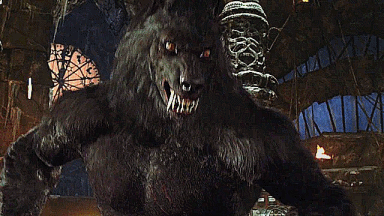
The Van Helsing werewolf never fails to bring in some attention, so here he is again in spite of irrelevance. But hey, he's a werewolf, so... it works! Right?
Moving right along--
For this in-depth look at "Bisclavret," I will be using A Lycanthropy Reader: Werewolves in Western Culture by Charlotte F. Otten, one of my very favorite werewolf sourcebooks. It's a wonderful collection of primary historical sources - and some stories that aren't folklore but were always considered fictional - and some very good introductions to and discussions of said works by Otten herself.
In fact, in her introduction to the section that includes "Bisclavret," Otten imparts some very wise words on werewolf legends as a whole...
On the moral level, the werewolf myth is a realistic assessment of the range of choices available to human beings. Humans who become werewolves in the myths and legends, or who cause others to become werewolves, are involved in moral metamorphosis: a process that recognizes the exhilaration that comes with engaging in degrading lycanthropic acts but also reveals the degradation that comes to those who deliberately choose to exhibit bestiality [bestial nature]. The werewolf myth, then, is a profound insight into human life. ... Regarded as a moral myth, the presence in the human spirit of werewolves can direct the culture, the society, the individual human being to sources of healing. If it does so, it is a myth not of despair but of hope. (Otten 223)
I would personally add, also in relation to “Bisclavret,” that it isn’t only those who become werewolves and behave as beasts or those who turn others into werewolves - it’s also extremely important in many werewolf myths how the werewolves themselves are treated by the human characters. How one treats a werewolf, with that person still being human but in the guise of a beast, is an important moral plot point in multiple werewolf legends, such as the werewolves of Ossory and - of course - Bisclavret. One is amoral if they assume a werewolf is evil solely because of their appearance, without judging their character first and appearance second. It’s not necessarily always a test of the werewolf character, it’s also a test of everyone around them. If the werewolf is virtuous and behaving like a human, isn’t it just as important to treat the werewolf like you would anyone else - even if it is a werewolf?
Now let's get to Bisclavret...
See the full post
112 notes - Posted June 22, 2022
My #1 post of 2022
Werewolf Fact #68 - The Importance of The Wolf Man (1941)
For Halloween this year, and in celebration of almost 70 werewolf facts, let’s take an extra deep dive yet again and review something everyone who likes werewolves should know...
It is virtually impossible to overstate the sheer importance of one single piece of media on the general perception of werewolves today.
This piece of media came from a time when going to the theater was a riveting experience, when movies chilled you, when you watched in awe and wonder, captivated by the practical effects that, to you, as you were fully engrossed in this storytelling experience, were reality. With no famous literature about werewolves having created a foothold of concepts, as Dracula by Bram Stoker did with vampires, and with only forgotten films and stories too strange to resonate with the common people about werewolves before it, this movie alone was allowed set the bar and establish all expectations for all werewolf media to come...
I’m talking about one of the classic Universal Monsters pictures - I’m talking about The Wolf Man (1941).
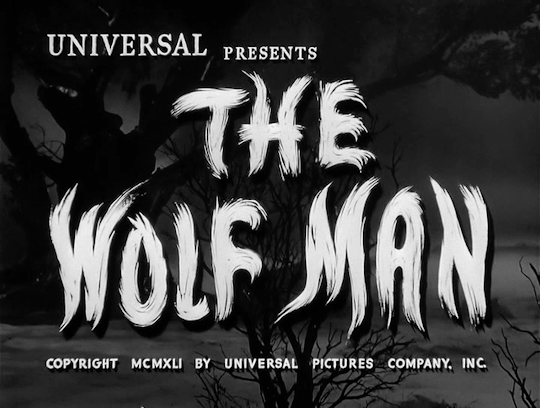
Other than it’s very fun filmmaking and great use of many different oldshool film tricks and, of course, practical effects, as well as its original Universal Monsters film charm, The Wolf Man is a timeless classic for another reason: without it, modern day werewolf media wouldn’t even be half the same.
Sure, there were other films that came before (though very few) that may have or certainly did influenced it, like Werewolf of London from 1935, but that doesn’t change that Curt Siodmak’s work with his original screenplay for The Wolf Man solidified almost all of our baseline modern werewolf concepts in popular culture. So just how influenced by folklore was he, anyway?
He was certainly influenced somewhat, in many obvious ways, but you may be surprised to learn just how much of our modern werewolves we see during Halloween and all around Hollywood and even, today, in many popular books, games, and other media, have The Wolf Man to thank for more than one major element - or at least derivatives of those major elements.
As a DISCLAIMER I first want to say that I absolutely adore The Wolf Man and almost (but not quite) everything it did for werewolves in media. My favorite werewolves will always be the ones that run close to what Curt Siodmak came up with, because I just love it. It’s a great story full of drama and sympathy and horror and tragedy. I personally prefer my werewolf hero to be different, and to end up different, but that’s an aside.
I just want to make a point here that I am NOT saying “not folkloric = bad,” and I don’t ever mean to infer that in every single situation. I love a lot of Hollywood werewolf concepts and I use many of them, myself, because they’re my favorites. I am merely pointing out what is and isn’t folkloric or original about the film (while probably lavishing praise upon its concepts because, again, gosh, I just love these concepts if they’re actually handled well, they make for such a great story!).
Let’s get into the film (you can find a link to watch this film legally and for free on the Internet Archive at the end of this post, by the way!)...
Even as early as the first shot in the film, after the opening credits, we are treated to some of Curt Siodmak’s original werewolf concepts. This is found not only in the description of the lycanthropy around one Talbot Castle, but also in the addition at the bottom of the fictional encyclopedia entry on lycanthropy that says “the sign of the Werewolf is a five-pointed star, a pentagram.” This is patently untrue in folklore, of course, and that’s just another thing Siodmak made up for the movie.
Sidenote: I appreciate the lines “Oh, another dog.” “No, that’s a wolf.” Wolves aren’t dogs, kids. Although Gwen isn’t exactly right about Red Riding Hood being a werewolf story... Anyway, details.
We come next to the poem. The one that Gwen first recites to Larry in the shop, and we hear it throughout the film, as it becomes extremely important...
Even a man who is pure at heart
And says his prayers by night
May become a wolf with the wolfsbane blooms
And the autumn moon is bright
This poem was entirely made up by Siodmak. As was, as you might imagine, this business relating to pentagrams being the werewolf’s symbol and one he sees in the palm of his next victim’s hand.
By the way, whatever you do, please don’t go picking wolfsbane like they claim to do in the movie. Just saying.
Next up we have the fact that Larry’s bite heals overnight. This is certainly folkloric in nature, to a degree (more on that later in my overview/rundown), but it’s just as feasible that Siodmak hadn’t heard those legends and just wanted to make his werewolf scary and powerful - and because the healing wounds relates to the silver concept that he himself made up. By the way, I absolutely adore the rapidly healing wounds.
Another aside: this movie is such a joy to watch. I hadn’t seen it in years until I started writing this post. Many, many years, despite knowing it like the back of my hand and studying it all my life. It’s so incredible to watch all the classic werewolf elements we know and love unfold on the screen in their original form. It helps that I’m a massive cinephile movie nerd weirdo anyway and movies are my favorite form of entertainment by an extremely wide margin, despite enjoying many kinds of entertainment.
Anyway, next up for werewolf lore, we have Frank’s dog barking at Larry - because the dog knows he’s a monster. It’s not uncommon in many stories for animals to sense things people can’t, but this is also something else we often see highlighted in werewolf media to follow.
Something to note about silver in this film is that Larry is obviously still carrying his silver cane around even after he’s been bitten by the werewolf. It obviously isn’t burning or harming him even after he’s been bitten and his wound healed, unlike a lot of werewolf media today (admittedly, including my own works), in which silver can cause a werewolf pain just to the touch, even in human form.
Next up we hear about whoever is bitten by the werewolf becomes a werewolf. This, I want you to know, is speculated to have been started sometime in French werewolf legends - some scholars hold to that. But even if it wasn’t originated by this movie (I honestly kind of think that it was originated by this movie), it was certainly popularized by this movie and sticks in the modern psyche thanks to this film alone. Yes, there was a time when lycanthropy may have been associated with rabies, and that may even be where Siodmak got the idea, but no matter what, that concept is timelessly popular solely because of this film.
Next up we have the buildup to the single most important moment in any werewolf movie... the transformation scene.
This film, as you might expect, also established the importance of the transformation scene. Really, such a scene has been important in werewolf media and highlighted even since Ovid’s Metamorphoses, but this movie really emphasizes the horror behind a man becoming a monster. And it’s so right to do so.
After all, what is most unique about werewolves and why do they stick with us so strongly? It’s the transformation. The idea that a man can become a monster and then return to a human form - and be cursed to live out a life turning back and forth. That’s really the heart of any werewolf story. That’s how it all begins. That’s the backbone.
So anyway, the transformation scene in The Wolf Man is of course excellent. We see Larry undergoing all the stages of the werewolf transformation as all werewolf media will follow after it - he freaks out, he runs home, tries to find seclusion, he looks at himself, looks in a mirror, tries to notice any changes... because he at once doesn’t think it’s real but also is certainly starting to believe it, with everyone freaking out so badly around him, especially the gypsies.
Larry’s first transformation begins and ends in his feet, as they don’t want to show us the werewolf himself yet - they build up to it, and we first see him in the dark forest. The werewolf feet are of course famous as a result of being our first glimpse of the famous wolf man.
Larry goes to a graveyard - a favorite haunt of werewolves and many other folkloric monsters - and kills a guy, biting his throat out. It’s noteworthy, of course, that Larry doesn’t leave humanoid wolf prints. He leaves wolf prints, to the point that everyone assumes it is a wolf, not some kind of monster.
Larry then finds a pentagram on his chest, about where the werewolf bit him or so. He realizes he left a trail and starts covering it up, only to discover the detective is tracking him. Again, the pentagram thing is not in werewolf folklore at all.
The rundown of lycanthropy that Larry’s father gives to him is actually a pretty good one. He isn’t wrong about finding werewolf legends almost everywhere, and it did become recognized as a clinical disease in much later years, around or after the Renaissance. He’s also right about it being Greek, in a way, given the assorted Greek werewolf legends, though we can never really know where it “originated,” per se, as werewolves are a universal legend. And, fittingly, he of course thinks it’s all in the mind - when it very much isn’t, not in this film. Silly practical fellow.
See the full post
133 notes - Posted October 19, 2022
Get your Tumblr 2022 Year in Review →
#tumblr2022#year in review#my 2022 tumblr year in review#your tumblr year in review#werewolf#werewolves#hell yes werewolf is my main tag#you better believe it#werewolves will forever be my thing
16 notes
·
View notes
Text

Also known as lukánthrōpus, werwulf, man-wolf or werewolf, the lycanthrope is a dangerous beast and should be shot on sight
#Art#sketch#my art#digital art#werewolf#also known as propaganda from The Town#You know which one#well. You don’t. General you. You - you don’t. But *you* do and you know exactly what I’m talking about#I’ve had werewolf brain rot since ooooh June? No regrets#I did sketch out some happier pups but I prefer a nice growl. Good wrinkles on the muzzle yknow#If you (general) wanna know what kind of town listen to “anthem” by Sarah sparks it’s. That.#Ok I should do actual work now bye#Trade-marked
13 notes
·
View notes
Link
Com o objetivo de iniciar 2024 com o pé na estrada, a HÉIA acaba de confirmar seu primeiro grande show em São Caetano do Sul/SP. O evento, organizado pelo Ataque Extremo, acontecerá no dia 20/01 (sábado) no conhecido Necropole Hall e contará também com Black Achemoth (SP) e os mineiros do Werwulf. Confira abaixo o cartaz e serviço completo para mais informações:
0 notes
Photo
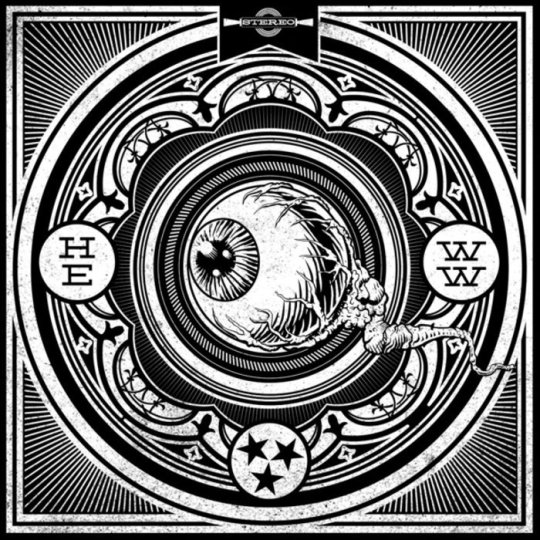
5:45 PM EDT June 24, 2023:
The Heavy Eyes - "Shadow Shaker"
From the Heavy Eyes/Werwulf Split Single
(March 2014)
Last song scrobbled from iTunes at Last.fm
File under: Memphis Stoners
1 note
·
View note
Text
Werewolves in Old Norse-Icelandic Literature
Werewolves in Old Norse-Icelandic Literature
Between the Monster and the Man
By Minjie Su——-(2023, 227 pages, €80 excl VAT)
SUMMARYAt the heart of any story of metamorphosis lies the issue of identity, and the tales of the werwulf (lit. ‘man-wolf’) are just as much about the wolf as about the man. What are the constituents of the human in general? What symbolic significance do they hold? How…
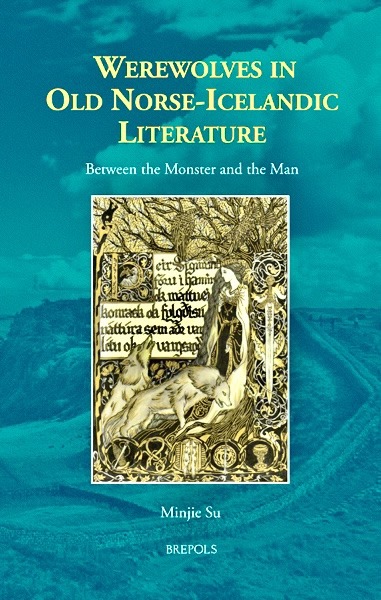
View On WordPress
1 note
·
View note
Text
wild dog based fantroll names
Aenocy, dierri (dire wolf/Aenocyon dirus)
alpinu, dohlec (dhole/Cuon alpinus)
alstro,halsto,stromi(New Guinea singing dog/Canis hallstromi)
Apenni, apenin (Italian wolf/Canis lupus italicus/Apennine wolf)
archae, haeocy (Archaeocyon/ancient dog. extinct genus of canids from North America)
armbru, ruster(Armbruster's wolf/Canis armbrusteri)
asenar (Asena from turkic foundation mythos)
aureus (golden jackal/Canis aureus. wolf-like canid from Eastern Europe, Southwest Asia, South Asia, and regions of Southeast Asia)
bailey (Mexican wolf/Canis lupus baileyi)
Belize (Belize coyote)
beothu, thucus (Newfoundland wolf/Canis lupus beothucus)
bernar (Bernard's wolf/Canis lupus bernardi)
boerte (boerte chino/mongolian wolf said to have mated with a doe to create the people)
brevis (the Don wolf/C. l. brevis)
Canina (wolf like subtribe)
Canini (dog-like subfamily)
canisu (canis lupus/wolf)
chanco (Canis chanco/Mongolian wolf)
crista, taldii, sicili, ilianu (Sicilian wolf/Canis lupus cristaldii/lupu sicilianu)
durana (Durango coyote)
edward, wardii (Canis edwardii/Edward's wolf is an extinct species of wolf)
eucyon (Eucyon.extinct genus of medium omnivorous coyote-like canid that first appeared in the Western United States)
fenrir,fenris,risulf,roovit,hrovit,nargan,vanarg (fenrir/Fenrisúlfr/Hróðvitnir/Vanargand, is a wolf in Norse mythology)
griseo (Manitoba wolf/Canis lupus griseoalbus)
gronla orioni (Greenland wolf/Canis lupus orion/grønlandsulv)
hattai (Hokkaido wolf/Canis lupus hattai)
hesper,perocy,erocyo (Hesperocyon/Hesperocyoninae. extict canine from north america)
hropos (werewolf/werwulf/lycanthrope)
iliari (dingo/Canis familiaris dingo)
laskan,pambas,basile,sileus (Interior Alaskan wolf/yukon wolf/Canis lupus pambasileus)
latran (Canis latrans/coyote)
leptos (The genus Leptocyon/leptos slender + cyon dog)
lorida (Florida black wolf/Canis lupus floridanus)
lupast,paster(African wolf/Canis lupaster)
Lupule, adusta (side-striped jackal/Lupulella adusta)
Lycaon, pictus(African wild dog/Lycaon pictus)
medein,edeina,vorune (Medeina/forest mother/zvorune/zvoruna from lithuania)
merico (Megacyon merriami/Merriam's dog. extinct dog from indonesia)
mesome, omelas ( black-backed jackal/Lupulella mesomelas)
mosbac (Canis mosbachensis/Mosbach wolf. extict eurasia wolf)
okamin, hodoph, philax, honshu (Japanese wolf/Nihon ōkami/Canis lupus hodophilax/Honshū wolf)
opokam, pokami (opo-kami, later turned into okami meaning wolf)
orcuti (Pleistocene coyote/Canis latrans orcutti)
protel, crista,istata (aardwolf/Proteles cristata)
Protoc,tocyon(Protocyon/extinct genus of canid from South and North America)
pulell, upulel (genus of canine from africa)
rabili (Texas wolf/Canis lupus monstrabilis)
remotu (northern Rocky Mountain wolf/Canis lupus irremotus)
rocyon, Nurocy, chonok, harien, iensis (Nurocyon chonokhariensis, extinct dog)
rukhan,turukh (tundra wolf/Canis lupus albus/Turukhan wolf)
sardou, theriu(Sardinian dhole/Cynotherium sardous, extinct canid from italy and france)
sekowe, ekoweic (genus that includes african wild dogs)
skoull (skoll/Treachery/Mockery is a wolf that chases the Sun in norse mythos)
socyon, brachy, hyurus (Chrysocyon brachyurus/maned wolf)
spelae, pelaeu(cave wolf/Canis lupus spelaeus)
speoth, peotho (Speothos/bushdog)
telocy (Atelocynus microtis/short eared dog)
tereut,tanuki,reutes (Nyctereutes/tanuki, raccoon dog)
tolina (Capitoline Wolf/Lupa Capitolina. wolf mother to the mythical founders of rome)
trinil (Mececyon trinilensis/Trinil dog. extinct canid species from Indonesia)
tundra,drarum,undrar(Alaskan tundra wolf/Canis lupus tundrarum)
usicyo,ustral (Dusicyon australis/extinct genus of South American canids)
vargar, wargoe (vargr/warg, wolves used in norse mythos)
vilkas, gelezi,exinis (The Iron Wolf/Geležinis Vilkas)
vitnis,nisson,hroovi,hatiho (Hati Hróðvitnisson. wolf who chases the moon in norse mythos)
vukoda,kodlak (vuko-dlak/wolf-furr. slavic werewolf)
wuchar,charia,ouchan,akhata,khatar,kebero,binawa,kyarke,dhahab,bukhar (African wolf/Canis lupaster which has many indiginous names in different parts of africa which ive pulled these names from)
wulfaz (proto germanic for wolf)
28 notes
·
View notes
Text
🌱 Hello! 🌱
Racists, TERFs SWERFs, Transphobes, misogynists, White supremacists/fascists/Nazis, homophobes, LGBTQ+phobes, etc blocked on sight.
Previously @witchlign
A little about me - I’m Wulfwynn, 24 years old, I use xe/xem pronouns & my blog is queer & lgbt & trans & non-binary safe zone!
I’m a cornish folk witch & have various relationships with multiple deities ('working with'/advisory roles & more familiar relationships mainly). I currently publicly affilate and work with the Bucca, a Cornish Celtic folk deity. I have a “speciality” in divination, animal (extinct and extant) workings & charms for friends.
I am actually a Cornish witch and not a #cornishwitch! I am invested in Cornish & wider Celtic politics and I post infrequently about that and anarchism.
Currently working on collating a bunch of Cornish folklore and traditional holiday things for the posting, but it’s slow going without many resources so it’ll be sparse for a while.
other blogs:
@cornishculture @neolithica-werwulf
I do not follow back minors/under 18s & I do post (tagged) nsfw stuff so...maybe don’t follow.
55 notes
·
View notes
Note
did u know that the word werewolf comes from the old english “werwulf” where “wer” means man and “wulf” of course is wolf. so if u think about it, ur username directly means “manbutch”
manbutch…. 😭😭😭 LETS NOT THINK ABT THAT 💔
4 notes
·
View notes
Note
Usually when referring to werewolves people tackle them in a pretty broad scope. Referring to Le Lobizon, the loup-garou, King lycaon, etc…but what is the mythology surrounding the werwulf or werewolf specifically? Like the German middle age definition of a werewolf?
That's a very complicated question - but it’s also not. If that makes any sense at all. Let me elaborate...
What we call “werewolves” has almost become retroactive. We can’t really say that “werewolf” is a uniquely German term, despite being Germanic in nature, because our first recorded use of a variant of “werewolf” wasn’t even recorded in Germany. “Werewolf” never appeared very much in medieval writings, despite originating during the medieval period (more on that in a minute). Yes, you can find people using the term “werewolf” (and its assorted variations), but sadly, it often becomes a matter of asking: is this a real source, or is this something someone is falsifying?

This is a woodcut from 1722 in Germany of a werewolf. It’s one of the few instances we do have that is directly referred to as a “werewolf,” so we can be sure their werewolf legends in the 1700s, at least, weren’t too far off the mark from the kind of thing we have today.
You can find lots of “werewolf legends” in Germany from the 1800s and around that general time period that supposedly throw around the term “werewolf” (again, and its variations), but having read many of these myself and researched their sources and origins, I can tell you that the overwhelming majority of these things are just... nonsense. They weren’t legends. They were basically short stories, fake local tales, and generally untrue “folklore,” for whatever reason people had to be producing it. (What’s one way you can spot these? Several of them mention silver) There is a glut of utterly fake “German werewolf folklore” out there from the 1800s especially.
At any rate, as for the Middle Ages in Germany and what they considered to be werewolves, we have to look at Germanic folklore and mythology for that. In the pre-Middle Ages, early Middle Ages, and even into the mid Middle Ages, much of the Germanic regions of Europe were dominated by the old Germanic concepts - namely berserkers (which, again, were not bear warriors) and related legends.
It wasn’t really until after the Middle Ages that the word “werewolf” became used often across multiple regions. Much of what we call “werewolves” today is a retroactive label or translation.
What may have been the first use of the word “werewolf” appeared in the early 1000s. To quote my book, The Werewolf: Past and Future...
Much like what happened with the Vikings, as the medieval world converted to Christianity, werewolves were cast in a steadily more negative light. The king of England from 1016-1035, King Cnut, issued the Ecclesiastical Ordinances XXVI, in which he specifically mentions the werewolf in relation to the Devil, saying, “[be watchful, that] the madly audacious were-wolf do not too widely devastate, nor bite too many of the spiritual flock.”[1] This passage marks one of the earliest instances in which the term “werewolf” is virtually equated to the Devil or demons in general in Christianity, which becomes common in later medieval writings – and it also marks the first recorded use of the word “werewolf.” Instead of the wolf being a brother and wolf transformations being desirable, or at least not worthy of condemnation, Christianity altered the view of werewolves, turning them into demonic creatures associated with evil and witchcraft, who romp across the countryside leaving death and destruction in their wake. As stated by Beresford, “[T]he use of the werewolf as a religious scapegoat by the Church throughout the Middle Ages is intrinsic to the development of the myth of the modern beast. What was once … a highly revered and worshipped beast, emerges in the medieval period as a savage creature, poisonous, destructive and wholly evil; a beast to be feared and not imitated.”[2]
[1]Beresford 80, quoting Ecclesiastical Ordinances XXVI by King Cnut of England
[2]Beresford 88. However, in this passage, he does not seem to wholly take into account just how many medieval werewolf legends existed, and how some of them were not necessarily demonic – these were, however, more often than not, unrelated to the Church (except for a few cases, which Beresford himself also cites in his book), so his point largely still stands.
Another direct use of the word “werewolf” appears in assorted medieval lays about werewolf knights, such as Marie de France’s Bisclavret, Sir Thomas Malory’s Le Morte d'Arthur, written in 1470, etc. So, in many ways, you could even say the proper medieval concept of a werewolf was a noble knight, as they were actually directly called “werewolves!”
It’s all but impossible, in folklore and myth, to nail down certain legends about certain creatures. This is because folklore and myth are very indirect, as compared to the kind of things people create today in pop culture. A true “werewolf legend” spans tons of legends - and simultaneously almost none at all. Scholars have often dictated what is and isn’t a werewolf legend, and their decisions about it frequently don’t even make any sense (especially if you ask me). This applies to so many creatures, including both werewolves and vampires, and that’s why when someone asks me “what were dragons like in folklore?” I can’t give a direct answer. I have to almost write a book on it, because all monsters and creatures in folklore have very complicated backgrounds, many different names, often didn’t go by the names we put on them today at all, etc.
I hope this helped! Sorry I couldn’t give a more direct answer. Some other useful werewolf facts for this topic:
What Is a Werewolf
What Is and Isn’t A Werewolf Legend
Peter Stubbe and how he wasn’t a werewolf at all and was never, ever referred to as one
80 notes
·
View notes